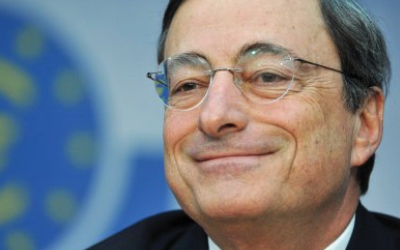Things in Europe actually look pretty good, though it’s coming off a really low base. It’s like someone who’s been in a bad car crash; while the cuts and bruises have healed they’re still not back to how they used to be. GDP growth continues to creep up, approaching three year highs of 1.6% p.a. and unemployment has finally nudged below 11% – see the two charts below. So they’re both heading in the right direction.
Euro area annual GDP rate Euro area unemployment rate

Source: Trading Economics
The problem, as we’ve talked about before, is that inflation is running at 0.1% for the whole year, which Mario Draghi, who runs the European Central Bank, tells us is keeping him awake at night. He could of course do what some other central bankers do and focus on ‘core inflation’, which would exclude the 30% fall in the oil price since its half-hearted mid-year rally, which looks a lot healthier at 1.1% – see the charts below.
Euro area inflation Euro area core inflation

Source: Trading Economics
Instead Super Mario announced the ECB will undertake more stimulatory measures when it meets this Thursday, saying “If we decide that the current trajectory of our policy is not sufficient to achieve our objective, we will do what we must to raise inflation as quickly as possible.” So that got markets excited enough to lift them from the monthly lows, but there’s ample room for cynicism. The ECB’s cash rate is already a measly 0.05%, it’s in the throes of a €1.1tn quantitative easing program that has driven the 10 year bond yield to negative 0.2%, plus the last time Euro GDP growth was at this level the ECB actually hiked rates. So given the numbers appear to be heading in the right direction, why would he be rattling the cage now?
One answer may well be the ongoing currency war between the world’s central banks. The lower Super Mario can jawbone the Euro the better it is for the exporting powerhouses of the EU, like Germany. And what better time to talk about more monetary loosening than when the U.S. Federal Reserve is on the cusp of raising interest rates? As a result, the Euro has weakened to all-time lows against the U.S.$ – see the chart below.
Euro vs. U.S.$

Source: Trading Economics
Like this article? view more in our News & Learning blog.





